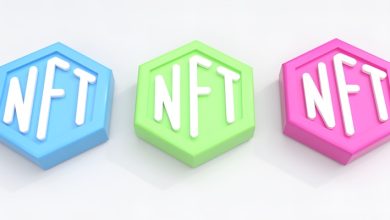How Avalanche Achieves Scalability Without Sacrificing Decentralization

- Understanding the trade-offs between scalability and decentralization in blockchain technology
- The unique consensus mechanism of Avalanche and how it enables scalability
- Exploring the role of validators in maintaining decentralization on the Avalanche network
- Case studies of successful projects built on Avalanche’s scalable infrastructure
- Challenges and future developments in achieving both scalability and decentralization on Avalanche
- Comparing Avalanche’s approach to scalability with other blockchain platforms
Understanding the trade-offs between scalability and decentralization in blockchain technology
When it comes to blockchain technology, there is often a trade-off between scalability and decentralization. Scalability refers to the ability of a system to handle a growing amount of work or its potential to accommodate growth. Decentralization, on the other hand, is the distribution of control across a network, ensuring that no single entity has too much power.
Many blockchain networks struggle to strike a balance between these two factors. Some opt for centralization to achieve higher scalability, while others prioritize decentralization, which can limit scalability. However, Avalanche has managed to achieve scalability without sacrificing decentralization.
Avalanche uses a novel consensus protocol that allows for high-throughput, low-latency transactions without compromising on decentralization. By utilizing a unique approach to achieving consensus, Avalanche is able to process thousands of transactions per second while still maintaining a decentralized network.
By understanding the trade-offs between scalability and decentralization, Avalanche has been able to create a blockchain network that offers the best of both worlds. Users can enjoy fast and efficient transactions without having to worry about the network becoming too centralized. This balance is crucial for the long-term success and sustainability of blockchain technology.
The unique consensus mechanism of Avalanche and how it enables scalability
The unique consensus mechanism of Avalanche sets it apart from other blockchain platforms. This mechanism, known as Avalanche consensus, enables rapid transaction processing and high throughput.
Avalanche achieves scalability by utilizing a novel approach to reaching consensus. Instead of relying on a single leader or committee to validate transactions, Avalanche allows multiple validators to propose blocks simultaneously. This results in quicker decision-making and reduced latency in the network.
The key to Avalanche’s scalability lies in its ability to achieve consensus quickly and efficiently. By allowing validators to independently confirm transactions in parallel, Avalanche can process a large number of transactions simultaneously, leading to increased scalability without sacrificing decentralization.
In traditional blockchain networks, achieving consensus can be a slow and resource-intensive process. However, Avalanche’s unique consensus mechanism allows for rapid finality, meaning that transactions are confirmed within seconds rather than minutes. This speed is crucial for enabling scalability while maintaining a decentralized network.
Overall, Avalanche’s consensus mechanism is a game-changer for blockchain scalability. By combining speed, efficiency, and decentralization, Avalanche is able to process a high volume of transactions without compromising on security or network integrity.
Exploring the role of validators in maintaining decentralization on the Avalanche network
Validators play a crucial role in maintaining decentralization on the Avalanche network. These validators are responsible for securing the network by validating transactions and adding new blocks to the blockchain. By participating in the consensus protocol, validators help prevent centralization and ensure that no single entity has control over the network.
Through a process known as staking, validators are required to deposit a certain amount of cryptocurrency as collateral. This incentivizes them to act honestly and follow the rules of the network. If a validator attempts to act maliciously, they risk losing their stake, which helps deter bad actors from compromising the network.
One of the key features of Avalanche is its use of a novel consensus protocol called Avalanche, which allows for quick and efficient transaction processing. Validators on the network are able to independently confirm the validity of transactions without having to wait for approval from other validators. This helps maintain scalability while still preserving decentralization.
Overall, validators play a critical role in ensuring the security and decentralization of the Avalanche network. By actively participating in the consensus protocol and staking their own cryptocurrency, validators help maintain the integrity of the network and prevent any single entity from gaining too much power. This decentralized approach is key to achieving scalability without sacrificing security on the Avalanche network.
Case studies of successful projects built on Avalanche’s scalable infrastructure
- One successful project built on Avalanche’s scalable infrastructure is a decentralized finance (DeFi) platform that has seen a significant increase in user adoption due to its fast transaction speeds and low fees.
- Another notable case study is a non-fungible token (NFT) marketplace that has leveraged Avalanche’s high throughput to handle a large volume of transactions without compromising on decentralization.
- A gaming platform built on Avalanche has also experienced success by offering seamless in-game purchases and transfers thanks to the network’s scalability and low latency.
- Additionally, a supply chain management solution has utilized Avalanche’s scalable infrastructure to track goods in real-time, leading to improved efficiency and transparency in the supply chain process.
Challenges and future developments in achieving both scalability and decentralization on Avalanche
One of the key challenges facing Avalanche in achieving both scalability and decentralization is finding the right balance between the two. While Avalanche’s consensus protocol allows for high transaction throughput and fast finality, ensuring that the network remains decentralized is essential for maintaining security and trust among participants.
Another challenge is ensuring that the network can scale effectively as more users and transactions are added. This requires ongoing development and optimization of the protocol to handle increased demand without sacrificing decentralization. Additionally, addressing potential bottlenecks and optimizing network performance will be crucial in achieving long-term scalability goals.
Looking ahead, future developments on Avalanche will focus on enhancing both scalability and decentralization. This may involve implementing new technologies, improving governance mechanisms, and exploring innovative solutions to address the evolving needs of the network. By continuously iterating on the protocol and engaging with the community, Avalanche aims to remain at the forefront of blockchain technology while upholding its commitment to decentralization.
Comparing Avalanche’s approach to scalability with other blockchain platforms
In comparison to other blockchain platforms, Avalanche’s approach to scalability sets it apart from the rest. While some blockchain networks struggle with slow transaction speeds and high fees as they grow, Avalanche leverages a unique consensus protocol to achieve high throughput and low latency. This allows Avalanche to process thousands of transactions per second, making it a highly scalable option for decentralized applications.
Unlike traditional blockchain platforms like Bitcoin and Ethereum, which rely on Proof of Work (PoW) or Proof of Stake (PoS) mechanisms, Avalanche uses a novel consensus protocol called Avalanche Consensus. This protocol enables nodes to reach agreement on the state of the network quickly and efficiently, leading to faster transaction finality and improved scalability. By utilizing this innovative approach, Avalanche is able to maintain decentralization while still achieving high performance.
Additionally, Avalanche’s subnets feature allows developers to create custom blockchains within the Avalanche network, each with its own set of rules and validators. This enables projects to scale independently without impacting the overall network, providing a flexible and scalable solution for a wide range of decentralized applications. By offering this level of customization and scalability, Avalanche stands out as a top contender in the blockchain space.
Overall, Avalanche’s approach to scalability offers a unique solution to the challenges faced by other blockchain platforms. With its high throughput, low latency, and customizable subnets, Avalanche provides a scalable and decentralized platform for a variety of use cases. As the blockchain industry continues to evolve, Avalanche’s innovative approach to scalability is sure to make it a key player in the space.



